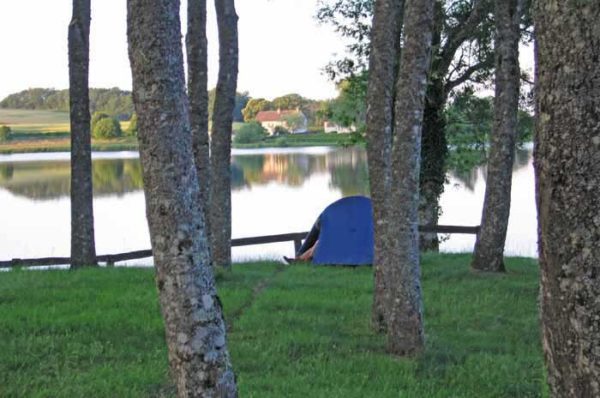
Saturday, 24 June 2006
Distance 27 km
Duration 5 hours 40 minutes
Ascent 268 m, descent 532 m
Map 28 of the TOP100 blue series (now superseded)
We had our breakfast perched on a massive boulder beside the lake. All three of our fellow walkers were still dead to the world as we left at 7, evidently not as afraid of the heat as we were.
The boulangerie was just opening as we got there, but none of the bars had any sign of life. Swinging out on the back road past la Justice, we then had to take the main north road, the D42, but it was almost empty at that hour and the walk was breezy and lovely, with pampered fields spreading out on both sides.
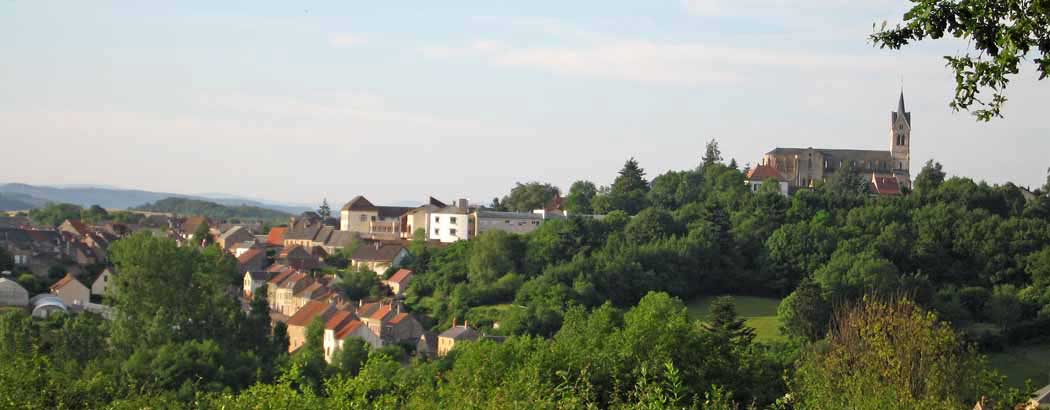
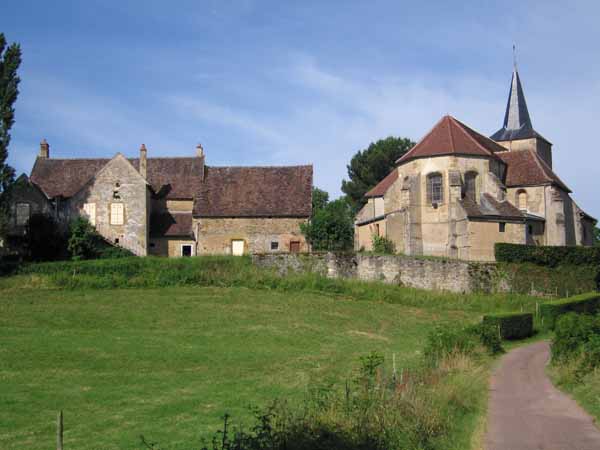
About 8 km further on we took a hairpin bend to the right onto the much tinier D147 which rose through a forest, then past the Chateau of Vauban hidden behind its wall, and along the slope to the imposing Chateau of Bazoches. The village of Bazoches was a kilometre away down the slope.
We had not managed to get either of the pilgrims to tell us whether there was a bar of any sort in Bazoches – that would have been of no interest to them – but we decided to chance it, taking a footpath down over the stream and up to the great squat trapezoidal church.
Vauban, one of Louis XIV’s most famous military engineers, owned the chateau and is reputedly buried in the church. But we were more interested in an unprepossessing edifice on the highway – a cafe and shop, with a terrace full of umbrellas. It was 10 o’clock and we had been on the hoof for over three hours.
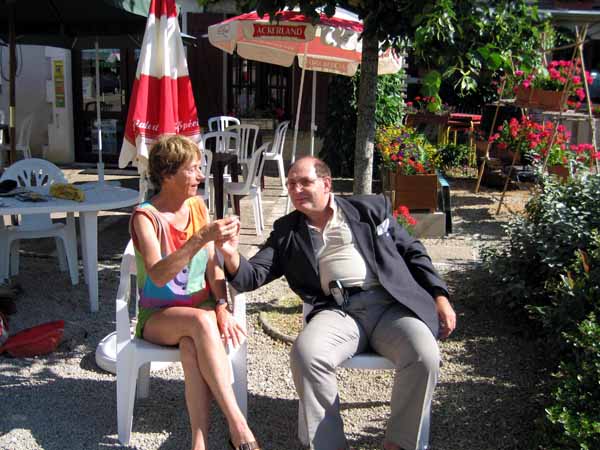
The shop had croissants, so we had a glorious coffee break with our bare toes basking in the sun.
The French lesson for the day was provided by a travelling salesman in the wine business, grossly fat and alarmingly emotional for the time of day – no doubt a hazard of the job.
He was almost in tears as he thanked us for listening to him, and showed us his huge purple legs, swollen with gout, to explain why he could not walk like us.
As a token of his gratitude he ordered Armagnacs all round, which the barwoman brought with an ironically cocked eyebrow. It was early in the day but we downed them.

At 10:45 we resumed our labours, returning to the mighty chateau on the slope. Short of waiting till afternoon, we had no way of seeing it up close, as it was guarded by an ugly concrete wall, so we pressed on.
The track led into the depths of a forest and became a churned-up black slippery mass. Some idiot had tried to drive a truck along it and left knee-high trenches in the mud.
It was quite a challenge to find a way along it, but eventually we emerged at Domecy-sur-Cure, with its romantic castle, and shortly afterwards we hit the highway again at Pierre Pertuis (the name refers to a pierced standing stone nearby).
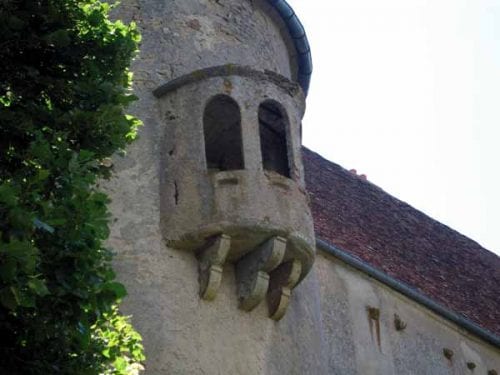
The first thing we saw there was a large hotel in the old style, with rough creamy stone walls supporting a mass of similarly creamy climbing roses.
The shutters were thrown open and a gravel terrace at the front was shaded by an immense spreading tree. Here we indulged in our second round of coffees, at a table with a beautiful bowl of flowers. It was noon.
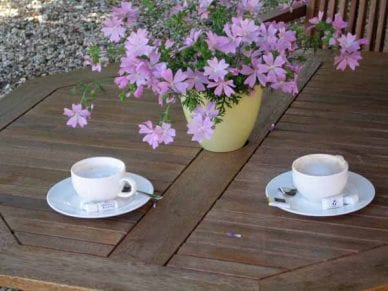
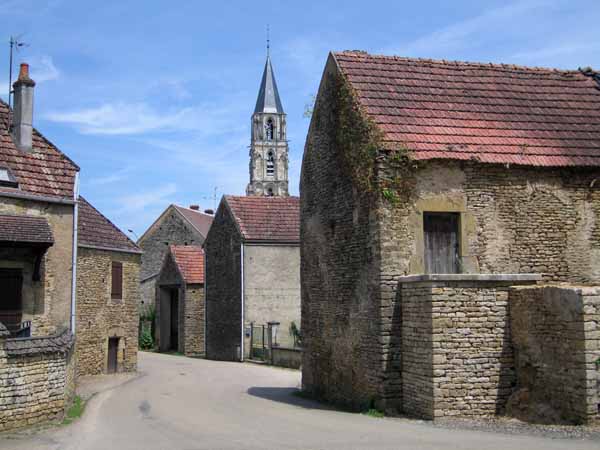
Only 6 km of road bash now separated us from our destination of Saint-Père and we made short work of it despite the heat.
Saint-Père is the humble servant at the foot of magnificent Vézelay, and the camping ground was there, so we were spared the climb.
The riverside camping ground was bustling with occupants but the office was closed, and stayed that way the whole time we were there – another free night for us.
Our after-lunch siesta was interrupted by a sharp thunderstorm, causing us to put up the tent in 30 seconds and pile inside.
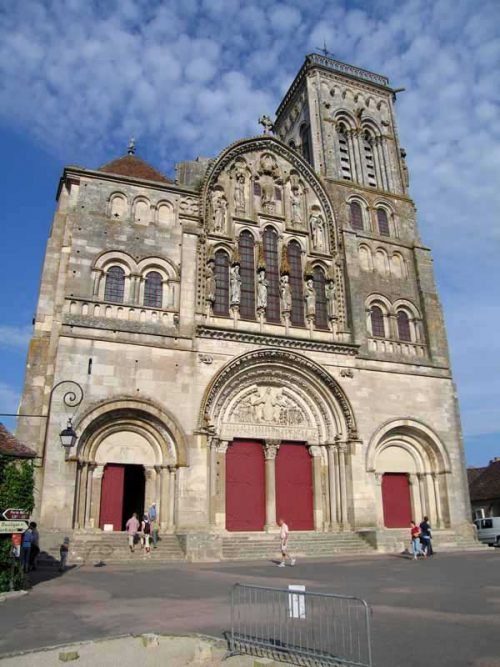
At 5 pm we set of for the heights of Vézelay but, failing to find the beginning of the walking track, we had to go up the abominable four-lane highway in the full afternoon heat, dodging cars full of tourists. One driver leaned out to denounce us for existing.
At long last we staggered into the village, which is no more than a few steep streets of gift-shops and cafes, on a narrow ridge leading up to the cathedral.
The place was awash with visitors – latter-day pilgrims to this very holy site. The present huge basilica is on a jutting crag and is the latest of a series of impressive buildings on this spot.
A Roman villa was replaced in Carolingian times by several convents, which were destroyed one after the other by Moorish and Norman raiders. In the ninth century a new abbey, affiliated with Cluny, was founded by Saint Badilo.
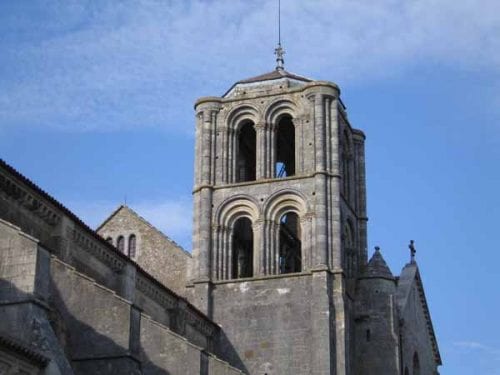
It was not until well into the next century that the monks, showing the same entrepreneurial flair as those at Compostela and Conques, began to claim to hold the relics of Mary Magdalene, the loose-living woman who repented and possibly became the wife of Jesus.
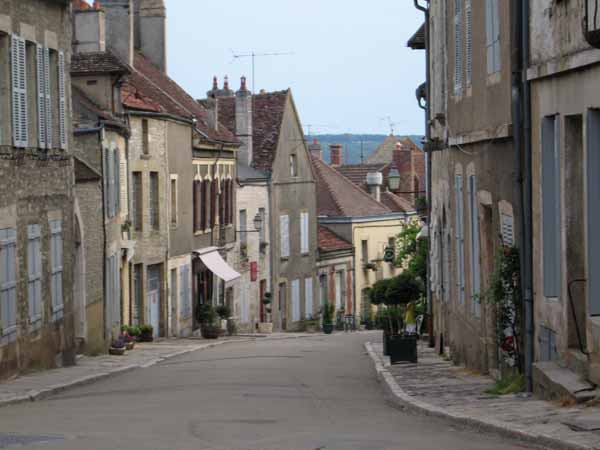
How she got to Vézelay was a bit of a miracle in itself, but in the age of faith, pilgrims flocked to venerate her remains as the patron saint of penitence (there must have been a fair number of guilty consciences around at the time). The church had to be extended to hold the crush.
Vézelay was also the starting point for one of the four pilgrim routes through France that led to Santiago de Compostela in Spain (the others being the Ways of Le Puy, Tours and Arles).
Its fame declined in the thirteenth century when a rival set of relics was announced in Provence, and the abbey fell into disrepair. By the nineteenth century it was in danger of collapse and was only saved by the redoubtable Viollet-le-Duc.
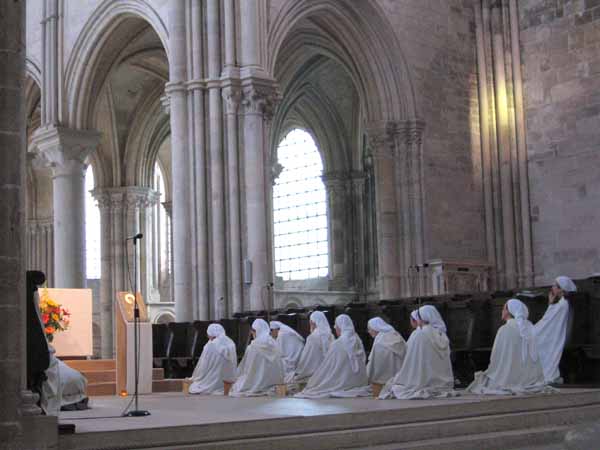
There is something puzzling and repellent about the present resurgence of pilgrim piety.
It is all very well to re-enact the mediaeval traveller’s life, as we do, but to actually embrace relic-worship, rejecting all the subsequent hard-won progress of science and reason, a hundred and fifty years after Darwin, seems to us very ungrateful.
The white-robed monks of Vézelay put on a good show in the evening. They filed into the choir stalls silently, facing away from the congregation of tourists, and sang a set of chants that echoed satisfyingly amongst the stone vaults.
On the way down, we found the missing footpath and had a pleasant descent through fields of grain.
Our dinner presented a problem initially. There was no way we were going back to the top, and down below at Saint-Père things looked unpromising.

Wandering along the main street, we passed a broken-down closed brasserie, then a frightfully expensive establishment where people with paunches and pearls were getting out of their Porsches. At last we came to an old hotel with a gravel courtyard at the front, set with tables and umbrellas, just our sort of place.
We started with a shared salade composée, then Keith had boeuf bourguignon and I had creamy mushroom tagliatelle.
We shared a whole bottle, which was a challenge on top of the aperitifs we had already consumed, but we managed.
Previous section: Autun to Lormes